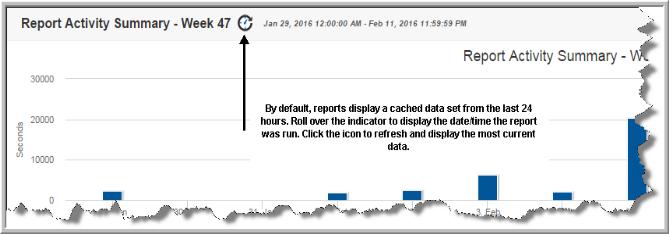How Reports and Caching Work Together
By default, reports display a cached data set from the last 24 hours.
When you run a report, Hitachi Storage Viewer takes the scope of the report, and checks if the cache contains the same report, for the same scope. If it does, the results are displayed from the cache. If the combination does not exist, the report is run from the database, saved in the cache, and then sent to the user interface. Cached reports are shared across users who belong to the same home host group.
When a report is served from the cache, an indicator icon is displayed on reports and dashboards. You can roll over the indicator to show the age of the report from the cache. Click the icon to purge the old report from the cache and rerun the report from the database. You can manually refresh at any time. See
Getting Started with the Inventory Navigator.

When a report is run, and it’s pulled from the cache, it does not show in the
Report Activity Summary or the
Report Activity Detail reports. These reports only show reports that ran and actually executed against the database.
Note: Scheduled, emailed and exported reports are not derived from the cache. These events are run in real-time, so current data is always used. Caching is only applicable for reports run in the browser.

